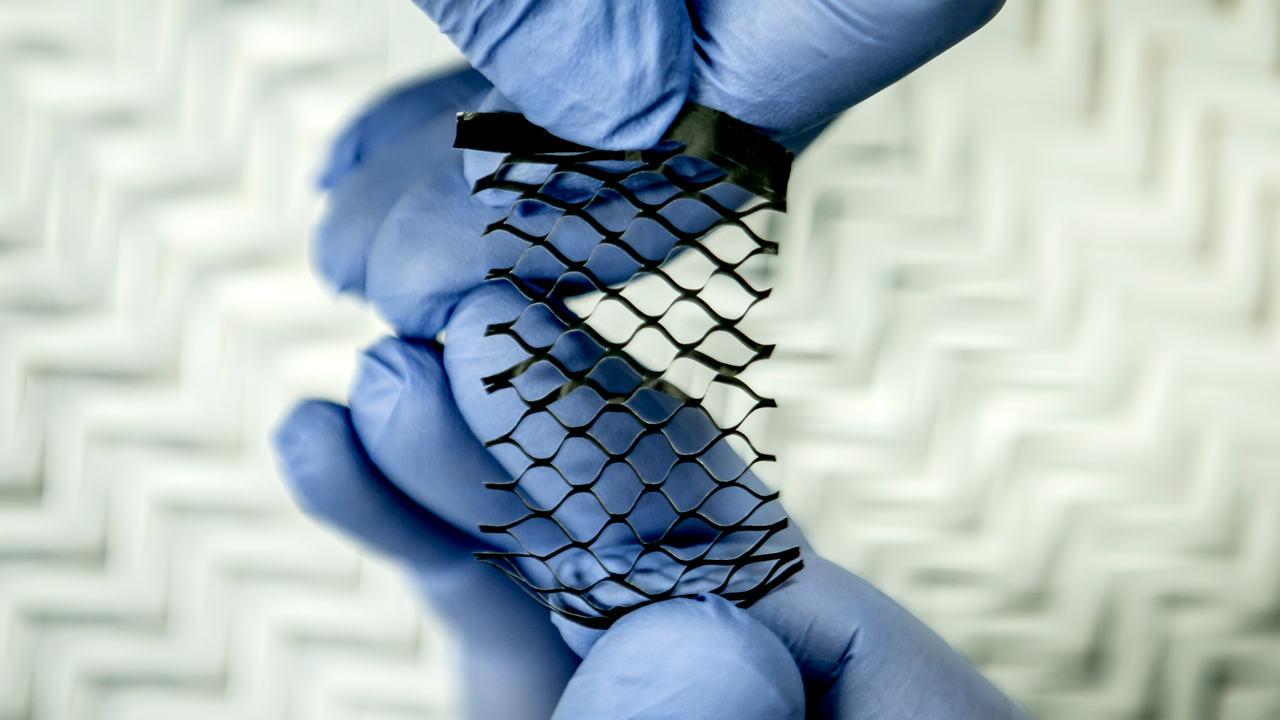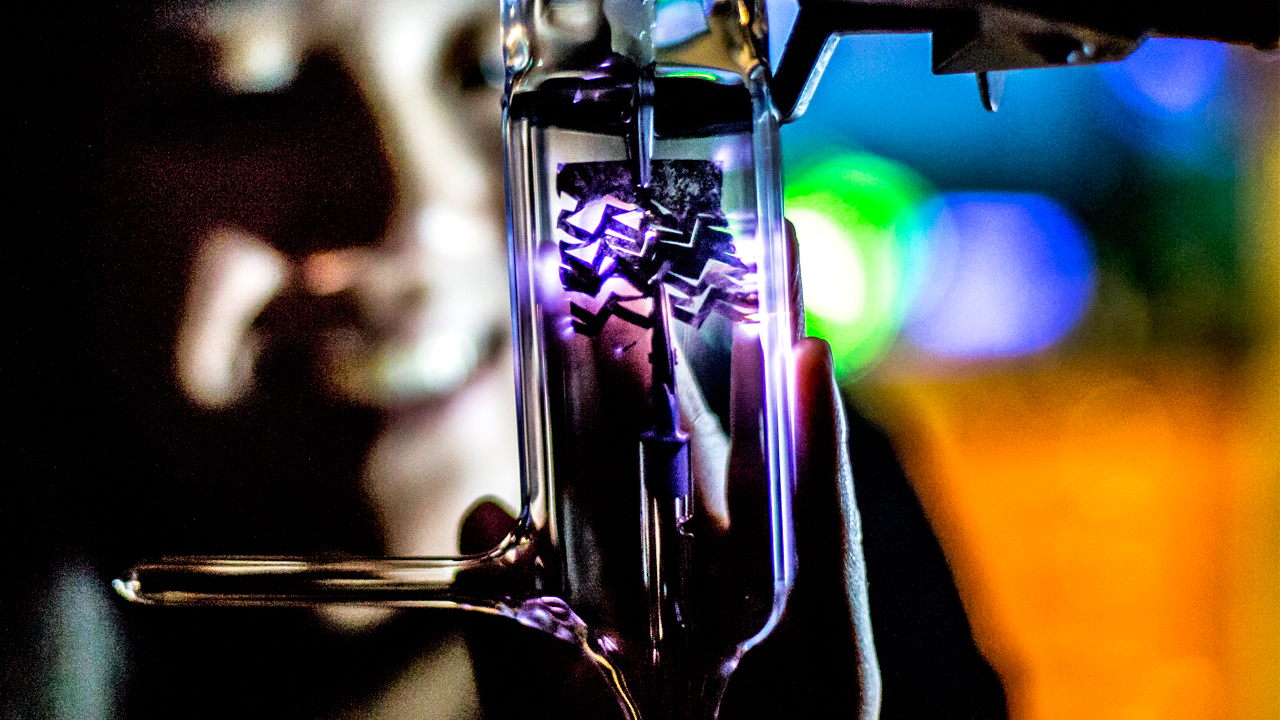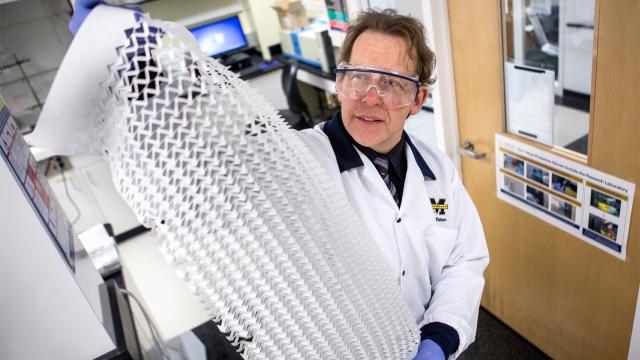LG’s G Flex phones are mostly known for their ability to bend slightly under pressure, but someday our mobile devices could be completely rolled up like a piece of paper. And researchers at the University of Michigan are hoping the art of intricate paper cutting might be the secret to that ultimate flexibility.
Conductors are an especially vital material in electronics. Used in everything from wiring to electrodes, they’re also notoriously difficult to make stretchable without seeing their performance drop dramatically over time as they eventually tear and break down. Without stretchable conductors, flexible electronics are just a pipe dream.

But researchers at the University of Michigan realised that if you introduce those tears and rips up front, they won’t pop up in unexpected places down the line and render a device unusable. So instead of trying to design a conductor that can stretch like elastic, the researchers took inspiration from the Japanese art of intricate paper cutting known as Kirigami. Using a series of small strategically-placed cuts, a rigid material like a conductor is suddenly able to flex, fold, and even be rolled, without the risk of it breaking down over time.
The trade off is that the conductivity of the material is reduced at the beginning, but it doesn’t change over time which is far more important when designing and engineering electronics. You can’t plan for unpredictable failures, but you can certainly work around known limitations.

The team’s first stretchable conductor prototype was made using thin tracing paper covered in carbon nanotubes that was sliced up like a cheese grater. It was used to successfully light up an argon-filled glass tube, turning the gas into plasma and creating the potential for a flexible stretchable flat-screen display.
But to make stretchable conductors small enough to fit in a thin smartphone, the researchers had to scale down their Kirigami creations. Using software simulations they were able to determine the ideal size, shape, and pattern of cuts in a material to maximise both its stretchability and conductivity. Layers of graphene oxide, a carbon and oxygen-based material just one atom thick, were stacked to produce a kind of microscopic conductive paper that was then sliced using lasers. The resulting material stretched as the software simulations had predicted, without a loss in conductivity as it was being manipulated.
Major companies are already interested in researching certain tech acrobatics. Unfortunately at this point there’s still a lot of research needed before you’ll be able to fold your iPhone up like a handkerchief and stuff it in your pocket. But it’s another important step towards a day when you won’t have to panic after accidentally sitting on your smartphone.
Photos by University of Michigan
